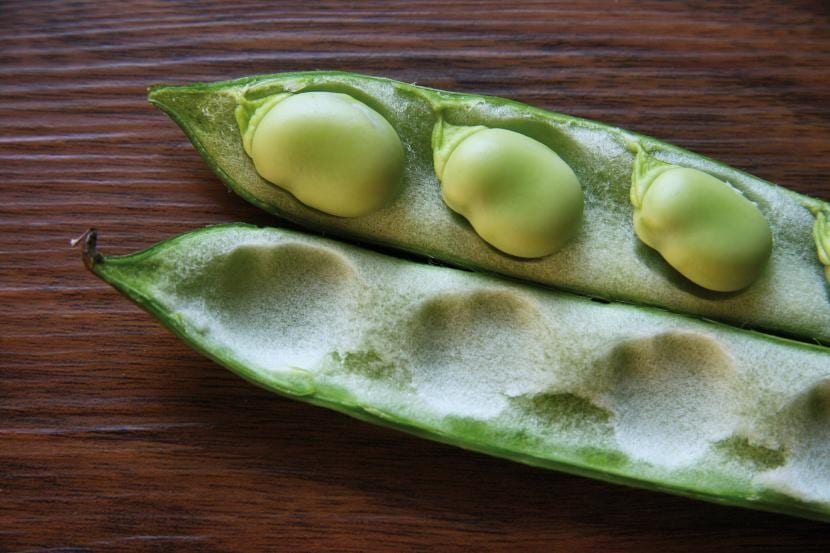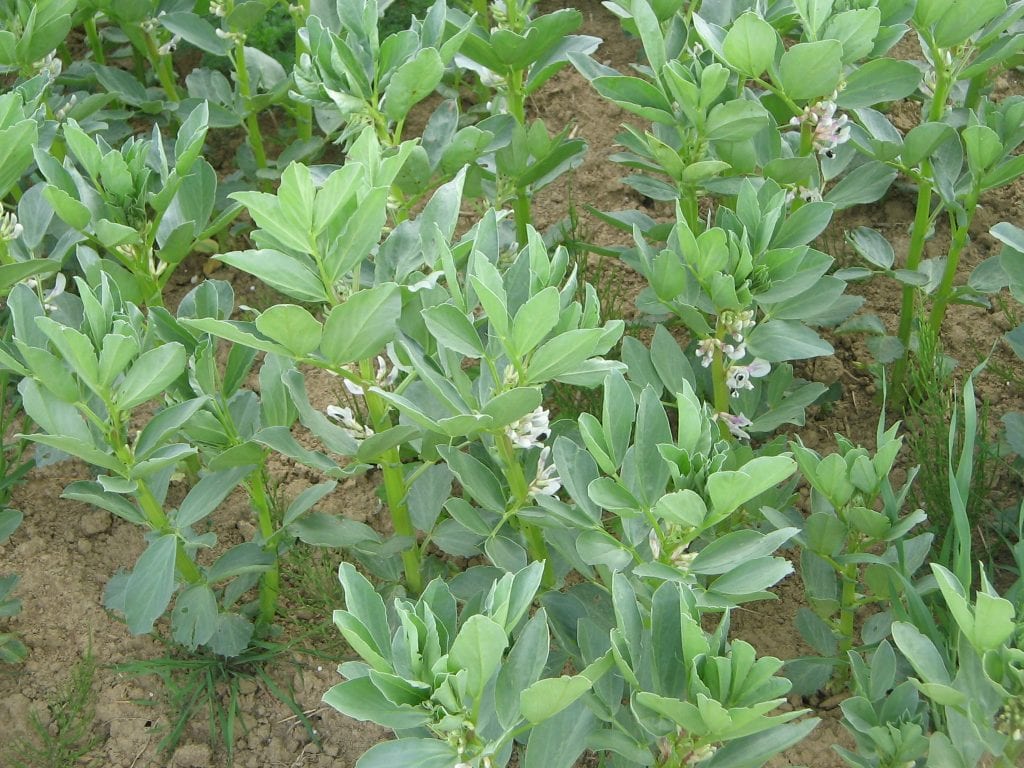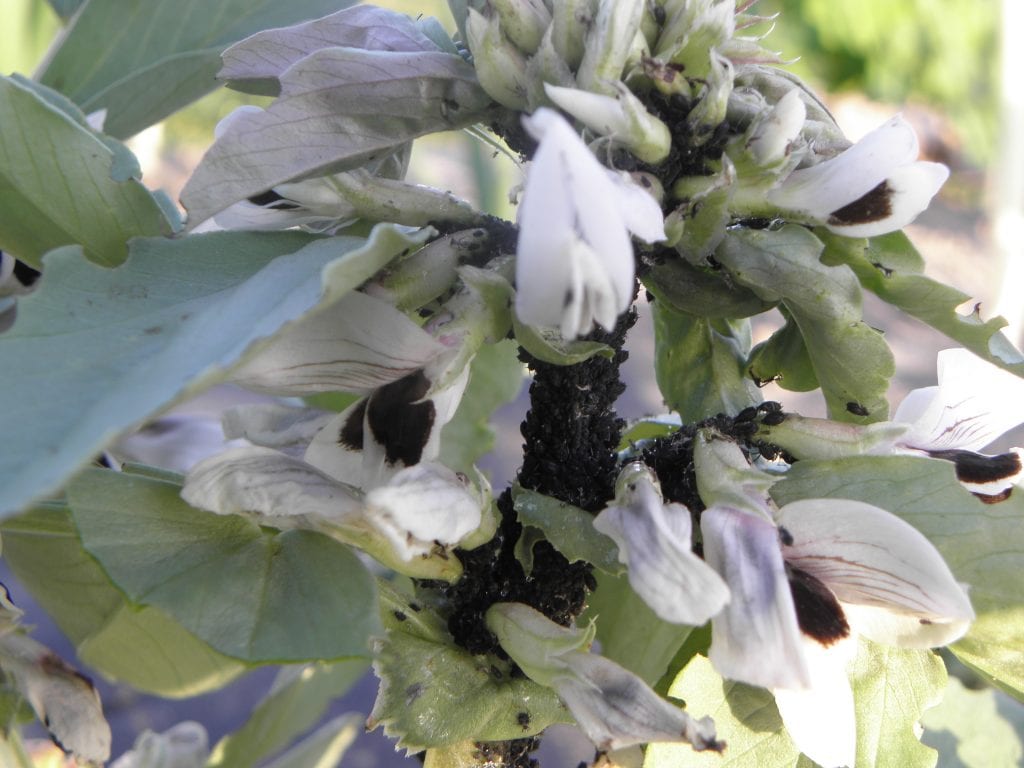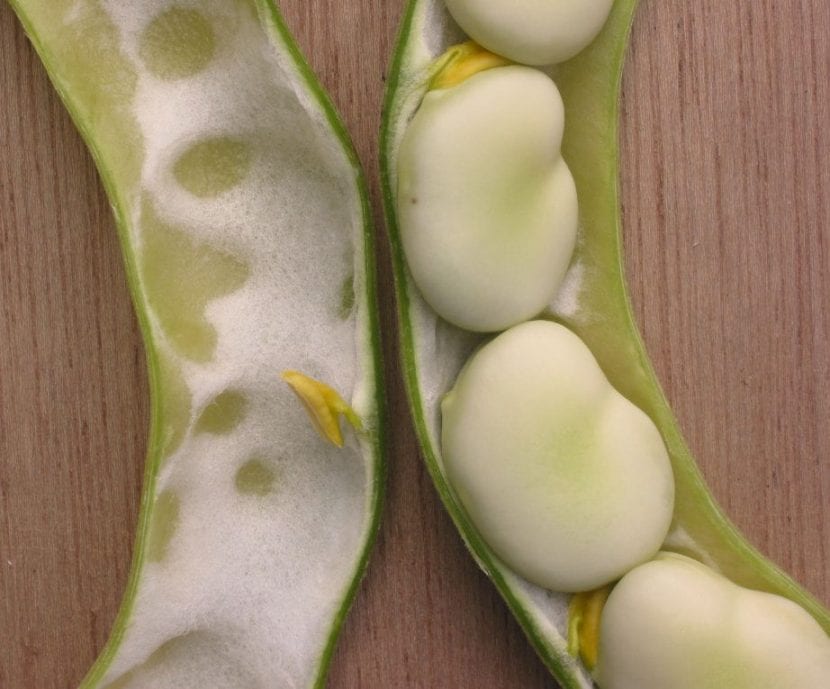
Fava beans are excellent herbs: they have a very fast growth rate and are also very prolific. They do not require any special care so they are a crop suitable for beginners, even for those who do not have any experience in plant care.
They can be grown both in pots and on the ground since their height does not exceed one and a half meters, which can serve as an excuse to decorate any corner. And it is necessary to say that have a fairly high ornamental value .
Fava bean characteristics

Broad beans, whose scientific name is addictive faba, are herbaceous climbing plants of annual cycle, that is to say, that in a year they germinate, grow, bloom, bear fruit and finally die. They are native to the Middle East, belonging to the botanical family Leguminosaceae (legumes). They have a straight and erect bearing, with strong stems. The leaves are alternate, compound and paripinnate. They do not have tendrils.
All the flowers are fragrant, large, up to 4cm, with white petals with violet, purple or black spots. They are hermaphrodites, that is, both male and female reproductive organs are in the same flower. The fruit is a legume elongated measuring between 10 and 30cm. Inside there are between 2 and 9 seeds arranged in a row.
There are different varieties, the following being the most used:
- Aguadulce: the stems are violet, the fruits are large and elongated and the seeds are cream-colored.
- muchhoney: they have a medium size, reddish stems, and toasted cream colored seeds.
- Blackberry Queen: its seeds are purple.
How are they grown?

Feel like growing lima beans? If so, then we explain everything you need to know to have an excellent harvest:
Siembra
Broad bean seeds it is recommended to sow them in early spring, either in a pot or directly on the ground. Let us know how to proceed in each case:
Potted
- The first thing we have to do is fill a pot of about 13-15cm in diameter with universal growing medium.
- Next, we place one or two broad bean seeds on the surface of the substrate, and we bury them about 1cm.
- Then, we water well, leaving the soil well soaked.
- And finally we place the pot outside, in an area where it gets direct sunlight.
When roots grow out of the drainage holes, it will be time to transfer them to pots with a larger diameter, such as 30-35cm.
In the garden
- Before sowing, it is important that we prepare the ground. To do this, it is advisable to go through with a rototiller or tiller to leave the soil loose.
- Next, we have to remove the stones, as many as we can.
- Then we level the ground with a rake.
- Now, we fertilize the soil with organic fertilizers, such as worm humus for example, pouring a layer 5-7cm thick.
- We go back to raking.
- Then, we make the grooves with a depth of 5cm, leaving a minimum distance between them of 60cm.
- We place tutors to guide their growth.
- We spread the seeds trying to leave about 30cm of distance between them.
- We cover them with soil.
- And finally we water.
They will germinate very soon, after 15 days.
Maintenance
Once we have our plantation of beans, we must continue taking care of them so that they can continue to grow and produce, when the time comes, a large quantity of fruits. To do this, you have to do the following:
- Irrigation: watering has to be frequent, especially when they bloom and bear fruit. Avoid allowing the soil to dry out excessively.
- Subscriber: throughout the season they should be paid with organic fertilizers, such as manure if they are on the ground, or with liquid guano if they are in pots.
- Pruning: The newer leaves must be removed from the main stems once the legumes have formed. This will allow them to mature earlier and, incidentally, reduce the risk of aphids attacking them.
- Harvest: legumes are harvested before they dry out, 70 or 90 days after sowing.
What pests and diseases can it have?

Although they are quite resistant plants, it has a series of enemies that must be controlled:
Pests
- Black aphid: they are deposited at the ends of the stems and in the flowers. It is fought with Malation or Menazón.
- Sitone: it is a beetle that eats leaves. It is treated with Carbaril.
- lixus: it is a beetle whose larva cut the stem of the plants. It is treated with Trichlorfon or Lindane.
- Trips pea: leaves silver leaves and deforms legumes. They can be controlled quite well by placing blue anti-thrips sticky traps at the height of the plants.
Management
- Mildew: causes the appearance of pale spots on the leaves. It is treated with Maneb, Zineb or with Bordeaux mixture.
- Roya: causes the appearance of orange / reddish spots on the leaves. It is treated with Zineb or Maneb.
- Sclerotia disease- Causes leaves and stems to have a cottony white mold that causes rot. It is treated with TMTD.
- jopo: it is a parasitic plant that, like all parasites, feeds on the nutrients it steals from the host plant, causing it to weaken and die shortly after. There is no effective remedy against it. The only thing that can be done to prevent their proliferation is to rotate the crops and destroy the jopos before they bear fruit.
Uses and properties of fava beans

Broad beans can be used as an ornamental plant. They have a very beautiful green color, and very decorative flowers so they can look great on a patio or terrace. But, without a doubt, its most widespread use is culinary. You can eat both legumes and seeds, and are delicious both fresh, in soups or cooked.
Did you know that they have medicinal properties? Its infused flowers are diuretic, purifying and can alleviate the symptoms of rheumatic diseases. Its seeds help reduce cholesterol levels, as they reduce and eliminate the fat present in the arteries.
And with this we finish the bean special. Do you dare to cultivate them?